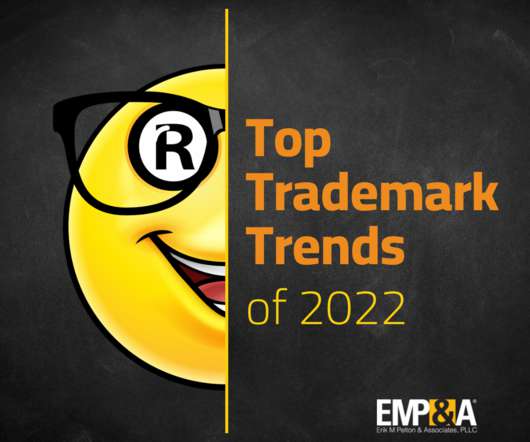Top Trademark Trends of 2022
Erik K Pelton
DECEMBER 20, 2022
which will determine the scope of the Lanham Act as applied to trademark infringement that occurs outside the US. The Court has also agreed to hear a patent case this term, and it will rule on a copyright fair-use case brought by the Andy Warhol Foundation for the Visual Arts that was heard this fall. 2010: [link].












Let's personalize your content